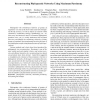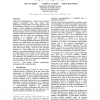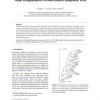198 search results - page 5 / 40 » Phylogenetic Networks, Trees, and Clusters |
CSB
2005
IEEE
14 years 6 days ago
2005
IEEE
Phylogenies—the evolutionary histories of groups of organisms—are one of the most widely used tools throughout the life sciences, as well as objects of research within systema...
APBC
2004
13 years 8 months ago
2004
Undiscovered relationships in a data set may confound analyses, particularly those that assume data independence. Such problems occur when characters used for phylogenetic analyse...
VISSYM
2004
13 years 8 months ago
2004
Phylogenetic trees are built by examining differences in the biological traits of a set of species. An example of such a trait is a biological network such as a metabolic pathway,...
CSB
2005
IEEE
14 years 6 days ago
2005
IEEE
Peptide compositions constructed out of whole sets of protein sequences can be used as species signatures for phylogenetic analysis. To account for point mutations, an amino acid ...
JCB
2007
13 years 6 months ago
2007
Reconstructing phylogenetic trees efficiently and accurately from distance estimates is an ongoing challenge in computational biology from both practical and theoretical consider...



